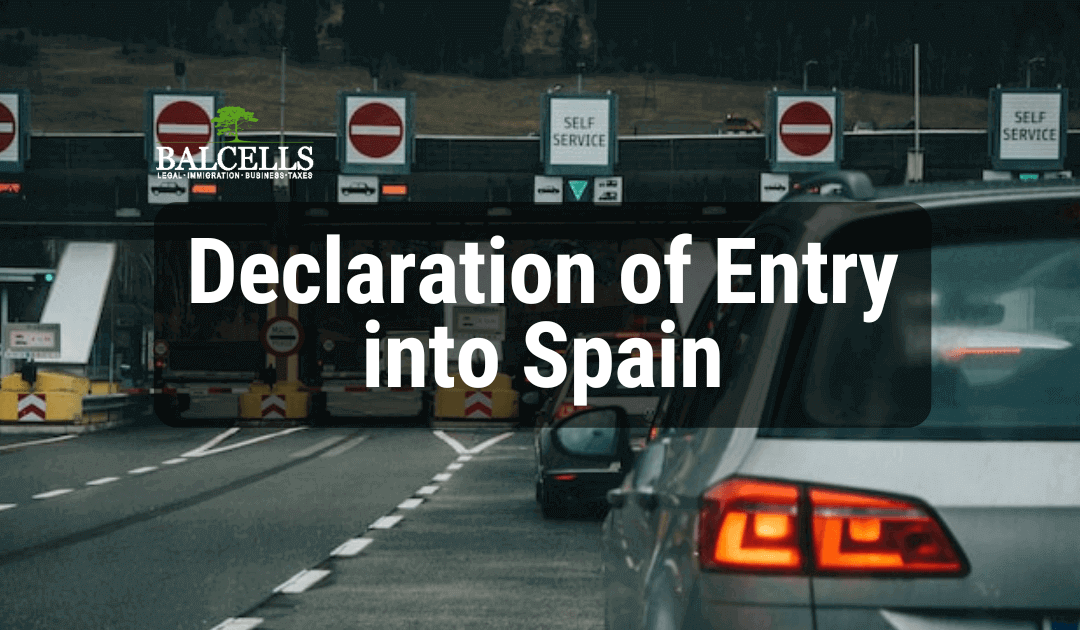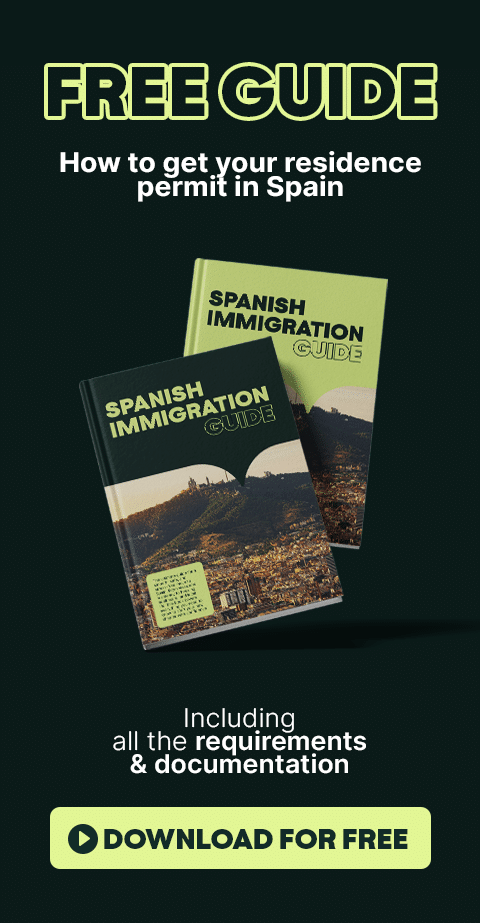Everything is in this post!
Context: Why should you go through this process?
Applying for residency in Spain as a tourist is completely possible.
You apply for a tourist visa from your country of origin, travel to Spain, and within the allowed 90 days, you can submit your residency application. From here, you can obtain a favorable resolution without having to return to your origin country at any point.
In these cases, one of the most important requirements, which the Immigration Office always checks and verifies, is that you are not in an illegal situation.
This means that you are within the 90-day tourist period at the time of application.
Generally, this is something that the Immigration Office verifies through your passport.
When you enter Spain from your home country, the police will automatically stamp your passport, marking the entry date.
However, there is a specific situation that makes this different.
We are talking about cases where you have entered Spain from another country with which Spain has an agreement to eliminate border controls or stamping. In other words, another country within the Schengen Area.
For these cases, the solution to prove your border crossing is the entry declaration.
Let’s see exactly what this entails.
What is the entry declaration?
The entry declaration is the process by which you notify Spanish authorities that you have actively and personally entered Spanish territory.
Once again, it’s a process you must undertake when you cannot prove the date of your entry into Spain through your passport because you came from a Schengen Area country with whom Spain has an agreement to eliminate border controls.
Next, we’ll look at the requirements associated with this procedure, with the allowed time frame for making the declaration being especially crucial.
How much time do I have to make it?
This is undoubtedly a key point that many foreigners are unaware of, and it often leads to significant issues.
The maximum timeframe for completing this procedure is very short, and it’s common to discover that you made this declaration too late.
You only have a maximum of 72 hours to submit the entry declaration after entering Spanish territory.
Once this time has passed, it will no longer be possible, and you will need to leave Europe if you want to proceed with your residency application.
Where to make the entry declaration in Spain?
The entry declaration is made before the national police force in Spain.
Our recommendation is that you request passport stamping immediately upon crossing the Spanish border, whether you enter Spain by plane, boat, or land transportation; you will always find a police checkpoint where you can request this stamp.
Otherwise, you can visit any police office (within the first 72 hours) without the need for a prior appointment to complete the procedure.
One of these offices is available at the airport itself, before passing through security.
How to make this declaration
Now that you understand the importance of this procedure, it’s crucial to know how it’s done and what it involves.
Once you go to the police station, they will provide you with a form that you must fill out.
In addition to providing personal information such as your name, nationality, or date of birth, there is one field that is particularly important and could cause issues if filled out incorrectly.
We are referring to the “tiempo previsto” field.
In this field, you should indicate the time you plan to stay in Spanish territory.
If you are applying for your residence card, this time should be approximately 90 days (the allowed time in the Schengen Area with a tourist visa).
In the case of specifying a very short period, for example, 2 or 3 days, your residence application would be rejected.
This is because the Immigration Office will review that document, and especially that field, to verify how long you have been in Spain; and adding 2 or 3 days to apply for residency beyond that period would result in a rejection since you would no longer be in Spain.
Therefore, make sure to stay in Spain long enough to submit your application.
But, what proof should you use to demonstrate your “physical” entry into Spain?
You can use the transportation ticket you used for the journey as proof of entry. That is, an airline ticket if you entered by air, a boat ticket if you arrived by sea, a bus ticket if you entered by land, and so on.
As long as it bears your name and allows identification that you entered within the previous 72 hours, it will be valid.
Final key tip to avoid issues with your application
As we’ve seen so far, it’s crucial that the authorities know when you entered Spain.
And this is something that will often be done through this entry declaration.
Due to the general lack of awareness among many foreigners about this requirement or the short timeframe available to complete it, this procedure can potentially cause problems.
That’s why the recommendation we always give to our clients is the same.
For greater convenience and overall ease, enter Spain directly (through cities like Barcelona or Madrid), without passing through another Schengen Area country beforehand; allowing you to receive the passport stamp directlyfrom the Spanish police upon entry.
This will save you waiting time and effort in obtaining the stamp later or having to complete your entry declaration.
Plus, as always, another piece of advice we can give is about planning. Before traveling to Spain, make sure you have consulted with an immigration lawyer to have all the variables under control and to fulfill all the necessary requirements easily.
Thus, if you have any doubts or would like to receive personalized guidance from our team, you can get in touch through the following form:
Book a consultation with one of our lawyers and solve all your doubts:

At Balcells Group we have been foreigners effortlessly moving to Spain for over 11 years. We help expats from all around the world with their immigration, business, tax and legal needs; ensuring a legally safe and enjoyable transition to the Spanish territory. Our multilingual team understands the importance of adapting to the cultural and legal specificities of our international clients. We offer a comprehensive service that combines the expertise of several generations of lawyers with the innovation needed to address today’s legal challenges, always striving to simplify processes and ensure reliable, effective results.



